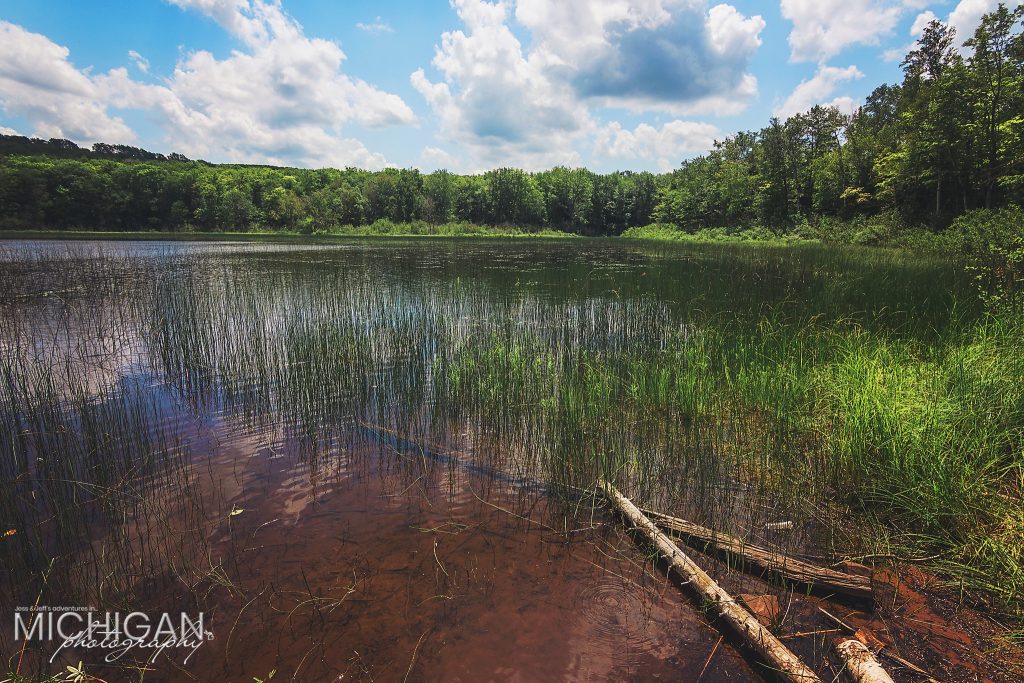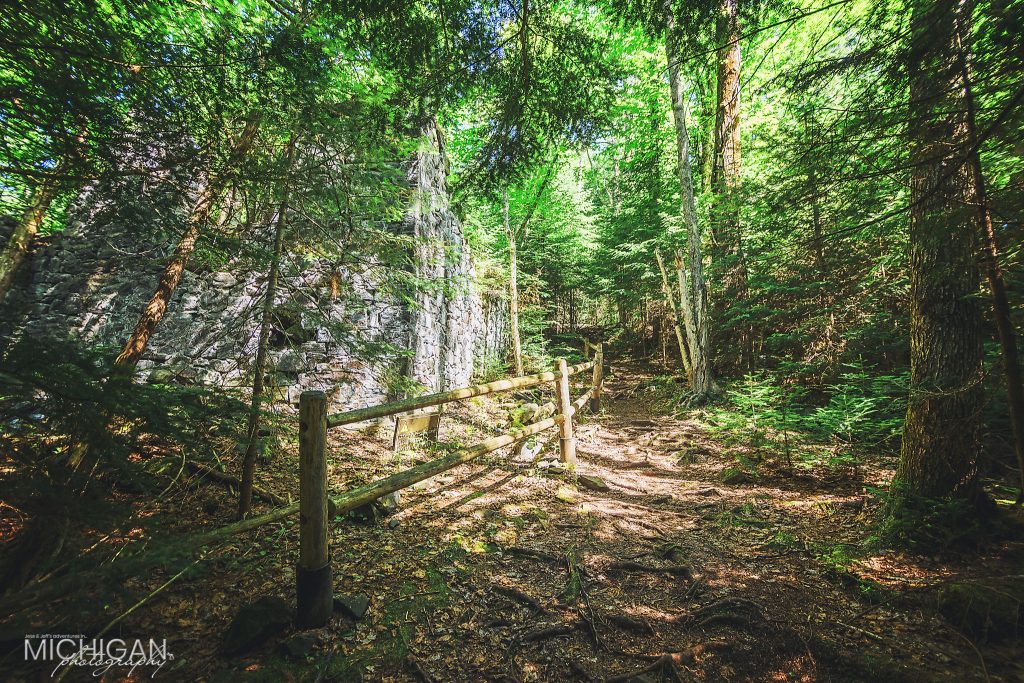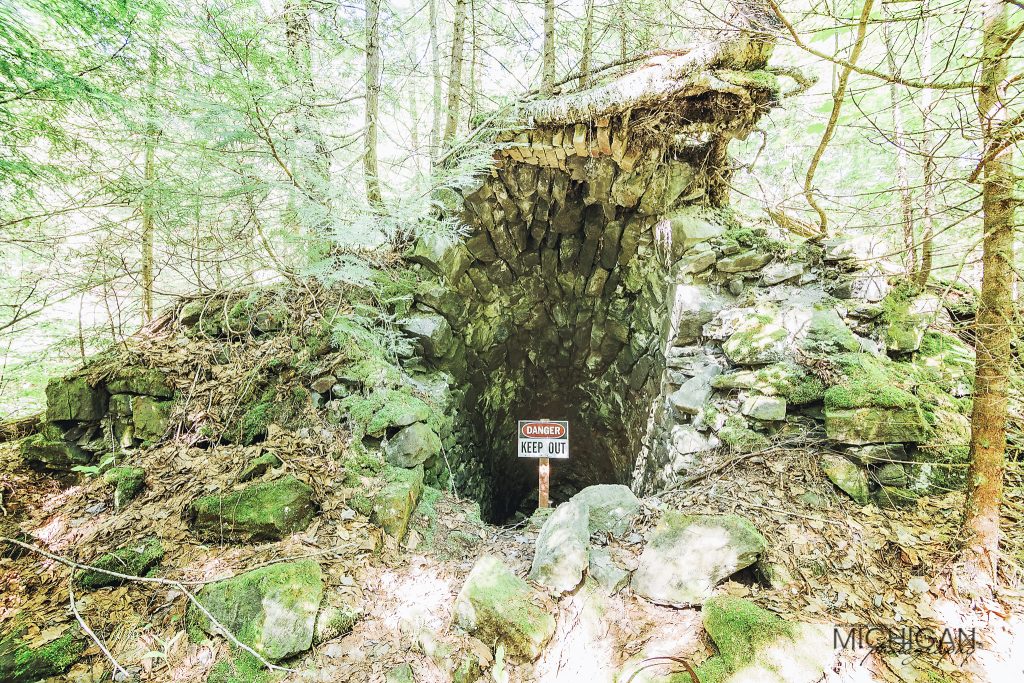Our Favorite Michigan Spots – The Porcupine Mountains
If you know us personally, then you will not be surprised to know that the Porcupine Mountains State Park is our absolute favorite spot in Michigan. So much so, that we have visited (multiple times) to date. It offers a bit of everything that we love. Deep peacefulness, wilderness, magical virgin forests, rivers, waterfalls, and grand vistas. There is something for any nature lover in the Porkies. If you are looking for a new place to visit in Michigan, and love being deeply immersed in nature, you’ll want to read on about our Porcupine Mountains experiences!
The Porcupine Mountains Wilderness State Park
The Porcupine Mountains State Park was created in 1945 primarily to preserve one of the last large stands of old growth Northern Hardwood forests west of the Adirondacks. The years prior to the founding of this park saw Michigan being almost literally “forested to death”. So activists and state legislators worked together to protect this unique and very beautiful area. If you plan on visiting, there’s plenty to do as the park itself spans a little over 60,000 acres with more than half of it being populated with virgin forest. We’ll tell you now, it simply is an amazing place! After 5 visits, we still can’t wait to go back and explore more of the park.

Prepare for some magical experiences
It is difficult for someone as inarticulate as myself to convey to you the magic of walking into an untouched, old growth virgin forest for the first time. In a bit, I will do my best. In the meantime, however, know that you can easily experience it for yourself as there are still 35,000 protected acres to explore in the Porkies alone. If you are have a familiarity with nature and forests at all, you likely already know the difference between a young and an old-growth forest. Just based on appearance alone, the difference is quite remarkable. However, I will do my best to give you a mental picture to augment the pictures we include here.

Abundant Old Growth, Virgin Forests
Upon first breaking into an old growth area, the first thing to hit your senses will be the very dank earthy scent. The years of fallen leaves, needles, older trees that have returned to the earth, and the failed undergrowth all decay on the forest floor to give these areas a unique bouquet of fragrances that is unlike anything I have ever encountered. This sensation is enhanced by the stillness of the air here, owing to the lack of a breeze due to the dense, high canopy extending far above the forest floor. In The Porkies in particular, the old growth is largely Hemlock and Maple. To me though, the Hemlock dominated forests seem almost something out of a fairy tale where Elves and magical creatures could be waiting for you around any turn in the wild, rustic pathways.
Majestic Hemlocks

Stately Maples

As you progress a bit further into the old-growth area, you’ll notice the absence of almost any significant undergrowth. This allows you to peer pretty far into the forest as the tall, majestic grandparents of the forest prevent any of their younger peers from gaining a foothold. Walking along the path you will notice other life on the floor though, in the form of fungi, lichen, and ferns where the oldest trees have fallen and allowed light to pass through. If you pass through any time after a recent rainfall, all of these sensations and small bits of life become even more notable and potent due to the petrichor.
Enjoy Waterfalls, Rivers, Lakes, and Natural Springs
One of the other big allures of the Porcupine Mountains is the numerous waterfalls, lakes, ponds, springs, and streams that can be found throughout the park. Nearly everywhere you can go, you will find that there is a beautiful nook which might have a hidden gem of a waterfall, natural spring, or peaceful little lake to take a moment of respite next to. If the combination of peace and nature are high on your list, you will want to seek these out! Your soul will thank you.
Greenstone Falls

Overlooked Falls


Pinkerton Creek

Small creek found on Pinkerton Trail


The ever famous Lake of the Clouds





Big Carp River


Lost Lake




Union Spring



Union Spring Trail Impoundment & Earthen Dam


You can even visit a Ghost Town at Nonesuch Mine
Back before the turn of the century, in 1867 to be precise, a prospector named Ed Less discovered an abundance of Copper in the area of what is now the Porcupine Mountains. It was here that he staked his claim and within two years of it’s discovery, the Nonesuch Mining Company was in operation. At the town’s peak, historical accounts tell us that the town had upwards of 300 inhabitants, a post office, a school, markets, stagecoach service, and even an official baseball team. Going there now, it is very difficult to see that so much could have been contained in what looks to be a section of deep woods. However, there are still some ruins in the area, notating the foundations of buildings and mining operations that are now long gone.
Stamp Mill


The Trail

An old Mineshaft

Remains of long forgotten equipment

Nonesuch Falls & Little Iron River
If you hike past the ruins, you’ll reach the Little Iron River and the diminutive Nonesuch Falls. In all, from the parking area to the ruins and back, you’ll hike around 1 mile or so. Jess and I have found this to be quite an easy hike with very little elevation change or challenging trails.

Enjoy the shores of Lake Superior
Bordering the park on the North, is the largest freshwater lake (by surface area) in the world. Lake Superior (Gitchee Gumee), is always a sight to behold. You’ll find it smooth as glass one day, and a roaring tempest of angry waves the next. There are a few different points in the park from which to access it. The easiest way to see it, however, is along the 107th Engineers Memorial Highway heading into the park. In fact, if you’re heading to the park from Ontonagon or Silver City, it is unavoidable. You will see the lake whether you set out to or not!


Don’t forget to look down!
There’s so many awesome views throughout the park. Towering trees, beautiful waterfalls, gently flowing streams, and even wonderfully expanisve views from the ancient mountaintops. In light of all that, it might be a bit difficult to find yourself looking at the ground. If you are in the least bit interested in what dwells on the forest floor, you’ll find many interesting little scenes throughout the park.
Mushrooms

Indian Pipe

American Cancer Root

Young life in the forest

Yes! There are critters too…
While our goal in hiking through the Porkies is to enjoy the unbelievable scenery, you may also happen upon some wildlife. Since our recent trips have included our Collies Anoush & Duncan, we really do not get to see the native inhabitants of the land very often. Our first trip, though, was without our doggies… So we got a bit lucky and managed to get acquainted with some of the locals.


Have a True Adventure with Back-Country Camping
We have a growing bucket list. One item on it, is to embark on the adventure of actually staying in the park. Perhaps in one of the park’s cabins or yurts. Maybe even taking it a step further and delving into the more truly adventurous back-country camping option. I have a feeling that these will offer a far deeper and more intimate connection with the park… And, with nature in general. Our biggest conundrum will be deciding on the lightest camera and lens setup. We want to be comfortable carry around everything (including our necessities)! We’ll probably have to saddle up our two Collie Dogs to help us share the load.

Something For Everyone
Regardless of your personality, or how you prefer to spend your vacation time… The Porkies offer an experience that you can appreicate. If you happen to be less of an explorer type. Which is totally cool, and prefer a more destination approach. You’ll find there are a few spots to consider here as well. The most popular and well known of these has to be the Lake of the Clouds scenic overlook. It is accessible to just about anyone and doesn’t require a long and potentially difficult hike through the back trails.
A Hope For The Future
We hope you’ve enjoyed our perspective on adventuring in the Porkies! However, before we let you go, we would like to give you some important information. As nature lovers, we do not want to pass this opportunity to bring your attention to a potentially devastating problem. This is a very real threat that could face the Hemlocks of the Porkies in the future. The Hemlock Wooly Adelgid. As of now, there have been no cases of the invasive and devastating insect in the park itself. We would like to keep it that way!
What you can do…
These invasive little beasts from Asia have found their way to the United States (and, yes lower Michigan). They have nearly caused extinction in some Hemlock populations in the US. We passionately urge you to follow any and all guidelines you can. This way we can help in preventing the spread of this plague of the forest. More information, including how to identify the symptoms, can be found on these pages:
Michigan’s official page on the Hemlock Wooly Adelgid..
An organization devoted to keeping our Hemlock population safe and alive from this threat.
Further reading on the Porcupine Mountains…
A recent Porcupine Mountains (and Upper Peninsula) adventure!
All of our current Porcupine Mountains images for sale! We are working to add more. Should you wish to purchase any of the art in this post that isn’t currently available, please contact us!
Our Favorite Hotel
Sunshine Motel & Cabins Tell Nue & Anthony we said hi!
For more tourist and other official information…
Site of the Porcupine Mountains & Ontonagon Area Convention & Visitors Bureau
Michigan DNR’s official page with camping and visitor’s information.

2 replies on “Porcupine Mountains – Photo & Hiking Information”